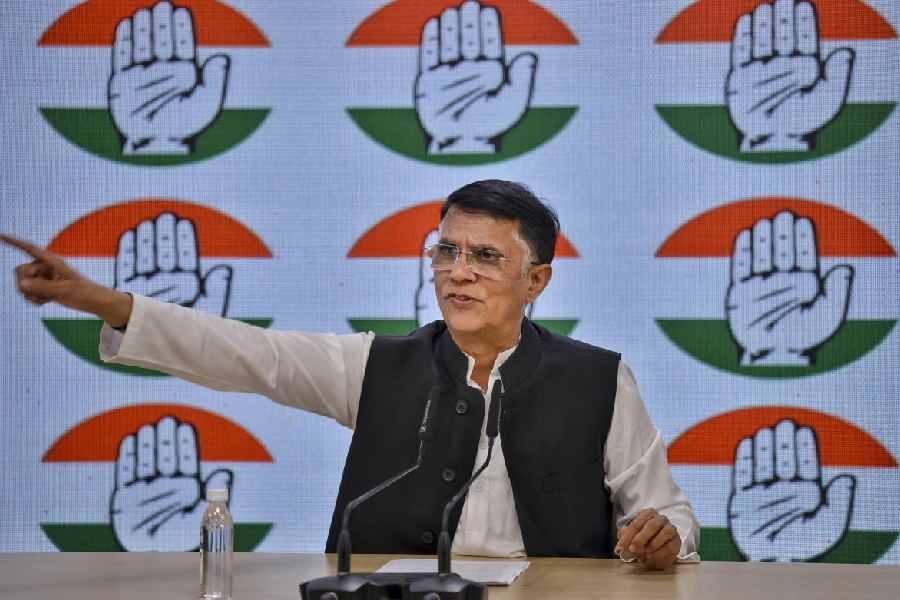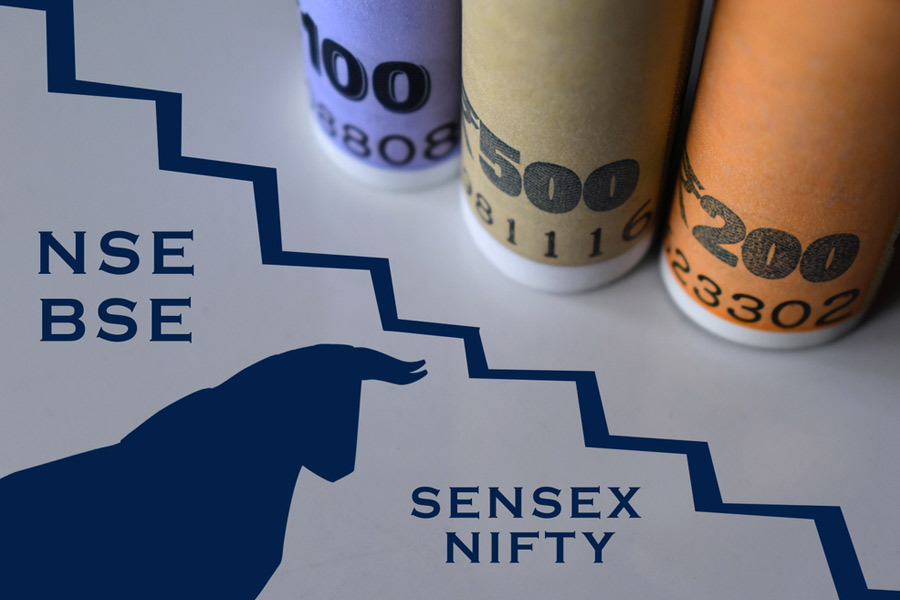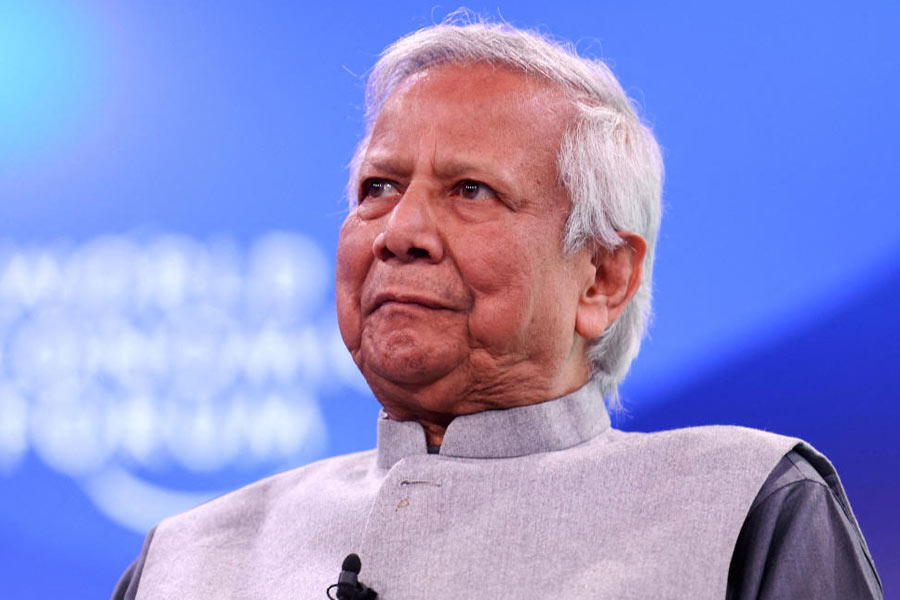 |
| Rizia Bibi, who has vowed not to allow her son to take up farming. Picture by Krishna Das |
Burdwan, June 19: Rizia Bibi has taken a vow.
Since last November, when her farmer son Safar Molla, 18, consumed pesticide to get rid of mounting debt, the widow has decided not to allow her other son, Babar, to take up farming.
Rizia, in her early 50s, cannot read or write. The woman, however, has learnt the fallacy of rice economics in Burdwan — once known as the rice bowl of Bengal — that pushed her son into the vicious cycle of borrowing before sowing and borrowing again after harvesting as his produce failed to fetch a fair price.
“It was the second day of Agrahayan (the month of harvesting). Safar returned from the field in the evening…. He was worried about his mounting debts, but he told me not to worry. He then went to his room, switched on the television set and consumed pesticide,” Rizia recounted as her eyes turned moist.
Babar, 20, occasionally gets some odd jobs, but his mother would not let him take the plunge into farming.
Ahead of the Aman season — during which around 75 per cent to 80 per cent of over 150 lakh tonnes, Bengal’s annual rice produce — such decisions are not uncommon across 18 of the 31 blocks in Burdwan.
“What’s the point in farming if it can’t give us food and some basic comfort?” asked Rizia, a resident of Bhatar, around 40km from Burdwan town.
 |
 |
| Suchona Pal (top) and Baduli Dhara, whose husbands committed suicide. Pictures by Krishna Das |
She had come to the district headquarters today to take part in a programme organised by the Paschimbanga Ganatantrik Mohila Samity, the women’s wing of the CPM, and the Krishak Sabha, the party’s farmer wing.
The programme was organised to highlight agrarian distress in the district, which used to be a red citadel till a couple of years ago.
The beleaguered party is now trying to highlight the “mismanagement” of the new regime in handling the farm sector to win over its supporters, who have been deserting the party since 2008 panchayat elections.
During the meeting, the CPM leaders rolled out a list of names of 41 farmers who have committed suicide over the last one year because of the state government’s failure to procure their produce by paying minimum support price.
“The government had offered Rs 1,080 per quintal as the minimum support price but only a small percentage of farmers in this rice bowl managed to get this price and that resulted in acute distress and people took their lives,” said Abdur Rezzak Mandal, the Krishak Sabha secretary in Burdwan.
A letter, bearing the names of the deceased farmers and their addresses, was sent to Prime Minister Manmohan Singh today with the request for a probe to assess the situation.
Till now, the Mamata Banerjee government has maintained that not a single farmer committed suicide because of farming distress.
While the exact reason of the deaths may require a detailed probe, there is little doubt that agrarian distress in Bengal has grown in recent years because of rise in costs of inputs such as power, seeds and fertilisers and the drop in price realisation of the produce.
The Telegraph had recently reported that in the last Boro season (January to end-February), farmers in Bengal left around 2.8 lakh hectares uncultivated, which highlighted lack of incentives in farming.
“One of the major reasons behind the fall in cultivable area is the faulty procurement policy of the government. The state government had fixed a target of procuring 14 lakh tonnes of paddy directly from the farmers between October 2011 and September 2012. But state could procure only 2.33 lakh tonnes till February 28,” said an agriculture department official.
According to him, the signs at the beginning of the Aman season — during which around 45 lakh to 47 lakh hectares are cultivated — indicate that the trend is unlikely to be reversed.
“As the cut-off date for sowing saplings in the Aman season (monsoon crop) is August 15, the decline in cultivable area would be available only in August,” said the official, linking the disincentive to lower income potential.
The steady decline in income potential from farming, however, is nothing new as successive reports of the Commission for Agricultural Costs and Prices have indicated how profitability from farming has declined over the years.
“The government has to play a role in helping farmers with loans, creating proper storage facilities and then procuring their produce at a reasonable price,” said a city-based economist.
Rough estimates suggest that while it costs around Rs 8,000 to produce paddy on one bigha, the farmer can access a loan of Rs 2,600 using Kishan Credit Cards.
“Farming in Bengal is heavily dependent on money lenders and as the price realisation is poor, the farmers can never come out of the clutches of money lenders. These structural problems were there during the Left rule but the problems have been compounded because of some recent decisions of the new government,” said the economist, who did not wish to be named.
On March 27, chief minister Mamata Banerjee had declared setting up of four “kisan mandis” in Galsi, Ketugram, Bhatar and Memari while touring the district to ensure a place where farmers could store their produce and get some money in advance to deal with their immediate demands.
None of these have come up till date, confirmed district agriculture department officials while adding that availability of land was an issue.
“The new government has done away with middlemen and asked farmers to sell their produce directly to the rice mills. Rice mill owners would throw away a significant amount as dust and then offer the price in cheques, which cannot be encashed before a fortnight. Our problems have only increased,” said Baduli Dhara, the wife of Madhai Dhara, a share-cropper who consumed pesticide and committed suicide in Gangarampur recently.











